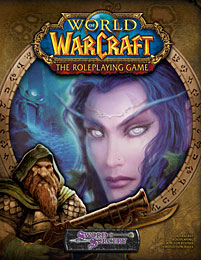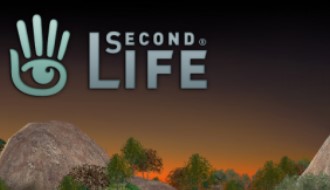 Robert Geraci has been interviewed here previously regarding his work in artificial intelligence. With his return below we discuss his new volume Virtually Sacred: Myth and Meaning in World of Warcraft and Second Life (Oxford University Press, 2014).
Robert Geraci has been interviewed here previously regarding his work in artificial intelligence. With his return below we discuss his new volume Virtually Sacred: Myth and Meaning in World of Warcraft and Second Life (Oxford University Press, 2014).
TheoFantastique: Thanks for your willingness to discuss your new book. How did you come to see video games, www.easyslots.com game and online social worlds as social places that are part of the new spiritual marketplace rather than merely entertainment?
Robert Geraci: Those realizations happened mostly just by taking the online residents seriously. I listened to what they had to say about their own experiences and the nature of their expectations; that led me to realize that what many hoped for from their experiences online. The Second Life (SL) residents told me of their hopes for the future and technology, and that led me to wonder what might else be at play for online residents. Then I attended an academic conference hosted in World of Warcraft (WoW) — which was my introduction to that world — and I started seeing that games like WoW provide different kinds of opportunities than worlds like SL, but that in both cases one crucial element was that both worlds could re-enchant the cosmos, providing opportunities for online residents to experience meaning and transcendence.
TheoFantastique: What kind of analytical framework guided your research?
Robert Geraci: I am a multidisciplinary kind of researcher, but actor-network theory (ANT) in science studies is probably my primary methodological affiliation. Given the strange things I do, however, I don’t know if Bruno Latour, Michael Callon, and that crowd would accept me as one of their own. I engage a kind of anthropology that is rooted in ANT but never strays far from the fundamental categories of religion as explored by Mircea Eliade, J.Z. Smith, and David Chidester. At the same time, this recent work was deeply, deeply influenced by a few authors in game studies: Gary Fine’s pioneering study of pen-and-paper role-playing games, first and foremost, but also William Bainbridge, Bonnie Nardi, Tom Boellstorff and others in the sociological and anthropological study of game communities.
TheoFantastique: How do virtual worlds, especially when combined with fantastic narratives and creative possibilities, lend themselves to spiritual exploration?
Robert Geraci: We are, at our core, religious. By this, I mean that I am comfortable naming our desire to claim the world as meaningful — to see the world as magical and as meaningful — religious. We are driven to find value and meaning in the world and we will persistently engage in that effort. Virtual realities allow almost limitless possibility in such practices. We can tell the stories we want to tell, join the ones we want to hear, and even reshape the landscape according to our needs. If we desire dragons at the limits of our maps, then not only can we draw them in but we can actually visit their domains. We can find, if we want to, various kinds of meanings that we often lack in daily life. The conventional, physical world is rich in opportunity for reflection and it lends itself to many kinds of consideration. Among those, however, has always been that we can invent new ways of thinking and storytelling. We want to enchant the world, which comes to us fundamentally banal, and our stories are crucial in this process. Virtual worlds can provide landscapes for our imaginations to walk through. They are bigger than maps — though I would never understate the magic of cartography — as we can walk, embodied, in the world of our dreams. We can be present in worlds of magic and meaning. It’s hard to overstate how valuable that might be for people.
TheoFantastique: What advantages do they have that traditional, institutional religions lack?
Robert Geraci: They have two key advantages: creative expressiveness and transcendent space-time. on the one hand, if you can dream it, you can probably code it. Virtual worlds are limited only by what we want them to be. That’s a pretty distant frontier! We can build playscapes, meditation gardens, foci for prayer and contemplation, futuristic technofantasties, arenas for heroic deeds, even commercial and consumerist shopping malls….they give us the chance to be the people we want to be…or, by practicing other options, they teach us who we want to be in the conventional world. It’s not just that we can be who we truly want in virtual worlds. Sometimes they are opportunities to think about how we’d like to be someone else when we log off. But I promised to mention time and space also. Ordinarily, we must be in one place in one time. But virtual worlds allow us to occupy many spaces and to perceive the passage of time according to those unique spaces. This means that we can form communities across vast gulfs and (unlike in ordinary website or chat room enabled communications) we can experience those relationships “bodily,” just as we do in traditional, conventional life. That means they can leverage some of our evolutionary heritage in mediating communication. Obviously, they are a far cry from face-to-face interaction, but at least they allow us to move around one another, shake hands, look one another in the eye, etc. As the technology improves, it is probable that we can even map physical expressiveness (such as of a user’s face) onto the avatar in a virtual world, which would then enhance the already meaningful embodiment that users experience in virtual worlds.
 TheoFantastique: Why did you choose World of Warcraft and Second Life as case studies?
TheoFantastique: Why did you choose World of Warcraft and Second Life as case studies?
Robert Geraci: I confess that it was mostly by accident of fate. When I first read about SL, I told my wife and she joined it to see what it was like. Seeing as how I was allegedly interested in religion and technology, I felt obliged to follow her good example! There, I learned much that was relevant to my overall interests in how religion and technology intersect in a variety of ways and so I remained for some years. SL became part of my first book (Apocalyptic AI: Visions of Heaven in Robotics, Artificial Intelligence, and Virtual Reality) thanks to interviews I conducted with people who wished to transfer their minds into virtual reality or who told me that their online personas were meaningfully separate from their conventional personas (separate people, as it were). I joined WoW because of a conference being hosted there by the eminent sociologist William Bainbridge. I just wanted to attend his conference while I was doing work on SL. But as I was present for a few weeks, that became a few months, all engaged in why people wanted to be there and what the game world gave back to them. Ultimately, I remained in both SL and WoW for many years and had an opportunity to see how much those worlds could conceivably give back to the residents.
TheoFantastique: How do these virtual worlds serve as “virtually sacred” and “do religious work” in a secular context?
Robert Geraci: They provide a host of religious and quasi-religious opportunities. In the book, I am interested in the ways in which WoW serves as an “authentic fake” (David Chidester’s term): a secular practice that fulfills genuine religious goals. In WoW, these are associational in that they provide tools for creating meaningful communities and ways of reflecting upon ethical concerns, and they are devotional in that one can have meaningful and even transcendent experiences in the game. Regarding the first, there’s been much work on the community-building aspects of games like WoW, but little that connects this element to other parts of the game that, in concert with one another, provide the virtually sacred experience. It’s not just that gamers build communities. For example, the game challenges them to think ethically (about good and evil, about the economy, about the environment, etc.). Now whether the players take advantage of this to grow as ethical people and citizens remains a separate question…but quite frankly the same is true of traditional religious organizations that attempt to teach moral codes. Furthermore, when you combine these with the fact that people can identify with a heroic version of themselves — one that flies, fights evil, and has superpowers…perhaps that might even one day be an uploaded form of their consciousnesses — then the overall package is profoundly religious even if not all players invest themselves in such a way. Now for SL, i had two separate interests. One was to trace the ways in which certain religious groups shift operation into the world, forming virtual extensions for traditional religions, including the creation of new models for those traditions (e.g. a group that created a Narnian landscape that permitted learning about Christianity while also allowing for Narnian-themed entertainment). In a separate chapter, I engaged transhumanist communities and their participation in SL, both in terms of individuals who desire a transhumanist future of mind uploading, etc. and in terms of the way that the designers and founder of SL also share a transhumanist perspective. Both by providing places for the religiously-minded to form groups, build places of worship, and convene and by providing a transhumanist world (and worldview?), SL is also deeply connected to contemporary religion. I hope that quick summary was coherent!
 TheoFantastique: What is the relationship of these virtual worlds to traditional religious institutions as they navigate the spiritual?
TheoFantastique: What is the relationship of these virtual worlds to traditional religious institutions as they navigate the spiritual?
Robert Geraci: I consider them to be both competitors and collaborators. It is certainly possible for traditional religious institutions to use the virtual worlds as ways of forming additional communities, as long as the creators understand that virtual communities are not particularly good at lending concrete support to conventional, physical communities…they have to be allowed to operate according to their own rules. Given that, however, virtual worlds become accessible locations through which religious groups can share their faiths and even respectfully communicate with others. At the same time, when virtual worlds become sites for religious activity as authentic fakes, then they also provide many of the features of traditional religion without requiring that people join those traditional communities. I once saw Tom Waits perform the song “Chocolate Jesus” on the David Letterman show. He said something very close to “this is a song for everyone who has trouble getting up on Sundays.” It’s a brilliant song, by the way, and a fabulous meditation on contemporary spirituality. Well, anyone who can have a community of close friends and confidants, think about what it means to be a good person, find meaning in his or her activity, and acquire increasingly wondrous superpowers in a fantasy landscape…that person might not feel a need to get up early on Sunday.
TheoFantastique: Thanks again for your time and for addressing this important subject.
Robert Geraci: Thanks for having me.





One Response to “Interview with Robert Geraci on the “Virtually Sacred””